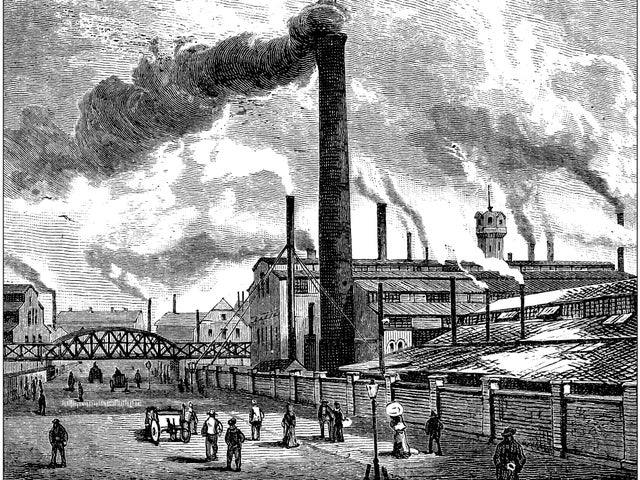The Dawn of the Factory Industrial Revolution:
The Factory Industrial Revolution, which emerged in the late 18th century and continued through the 19th century, marked a radical departure from traditional modes of production. It was driven by several key factors, including advancements in technology, changes in labor practices, and the evolution of transportation and communication systems.
Key Characteristics:
- Mechanization: Factories introduced mechanization on a large scale, replacing human and animal labor with machines powered by water, steam, and later, electricity. This shift exponentially increased production capacities and efficiency.
- Specialization: Factories promoted division of labor, with workers specializing in specific tasks. This specialization streamlined production processes and paved the way for mass production.
- Urbanization: The rise of factories led to mass migration from rural areas to urban centers, resulting in the growth of cities and the emergence of an urban working class.
- Innovations: The Factory Industrial Revolution spurred numerous technological innovations, such as the spinning jenny, power loom, and steam engine, which revolutionized textiles, transportation, and energy production.
- Global Impact: The widespread adoption of factory-based production transformed economies around the world, influencing trade, infrastructure development, and the international division of labor.
Impacts of the Factory Industrial Revolution:
- Economic Transformation: The Factory Industrial Revolution triggered unprecedented economic growth by significantly increasing production capacities and enabling the mass production of goods. This laid the foundation for modern capitalism.
- Social Changes: Urbanization led to the growth of cities and the emergence of a new working class. Labor conditions were often harsh, giving rise to labor movements advocating for better working conditions and workers’ rights.
- Technological Advancements: The rapid development of machinery and technological innovations spurred advancements in various fields, including transportation, communication, and medicine.
- Global Connectivity: Improved transportation, such as railways and steamships, facilitated global trade and interconnectedness, leading to the rise of a global economy.
- Environmental Impact: While the Factory Industrial Revolution brought about tremendous progress, it also raised environmental concerns due to increased pollution and resource consumption.
Enduring Legacy: The Factory Industrial Revolution left an indelible mark on human history. Its legacy continues to shape the modern world, influencing how we produce, consume, and interact with technology. Key takeaways from this period include:
- Technological Innovation: The emphasis on innovation and mechanization laid the groundwork for subsequent technological revolutions, shaping industries and societies for centuries to come.
- Labor Movements: The challenges faced by the working class during this era paved the way for labor movements and the establishment of workers’ rights, influencing modern labor laws and regulations.
- Economic Models: The transition to mass production and the growth of industries influenced economic theories and models, contributing to the development of modern capitalism and economic systems.
- Urbanization Trends: The shift towards urbanization and the concentration of populations in cities during the Factory Industrial Revolution set the stage for ongoing urbanization trends globally.
